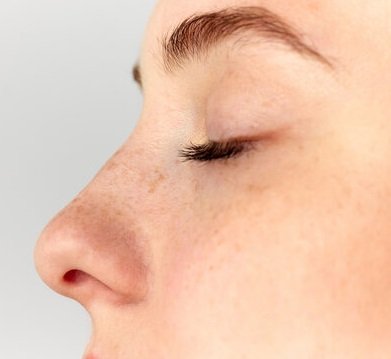Rhinoplasty is one of the most popular cosmetic surgeries worldwide, and Islamabad is no exception. With advancements in surgical techniques and the growing demand for facial enhancement, many individuals are considering a nose job for either aesthetic improvements or medical reasons. When exploring options for Rhinoplasty in Islamabad, it is important to understand the distinction between cosmetic rhinoplasty and functional rhinoplasty, as the purpose and outcomes of both procedures differ significantly.
Understanding Rhinoplasty
Rhinoplasty, commonly referred to as a “nose job,” is a surgical procedure that modifies the structure of the nose. The nose plays a vital role not only in breathing but also in defining facial harmony. Therefore, rhinoplasty is often performed for two major purposes:
- Cosmetic reasons: to improve appearance and symmetry.
- Functional reasons: to improve breathing or correct structural issues.
Both cosmetic and functional rhinoplasty can be life-changing, but they address different concerns. Let’s explore each in detail.
What is Cosmetic Rhinoplasty?
Cosmetic rhinoplasty focuses purely on enhancing the aesthetic appeal of the nose. People who undergo this procedure are generally satisfied with their breathing but wish to refine the shape, size, or proportions of their nose to achieve a more balanced facial appearance.
Common Goals of Cosmetic Rhinoplasty:
- Reducing a nasal hump.
- Narrowing a wide nasal bridge.
- Refining the nasal tip.
- Adjusting nostril size and shape.
- Correcting asymmetry caused by genetics or minor injuries.
Who Chooses Cosmetic Rhinoplasty?
Patients who feel self-conscious about the appearance of their nose or believe it disrupts the harmony of their facial features often seek cosmetic rhinoplasty. Many individuals report a boost in confidence and self-esteem after the procedure.
What is Functional Rhinoplasty?
Functional rhinoplasty, on the other hand, is primarily performed to correct structural problems inside the nose that interfere with normal breathing. While it may improve the external appearance of the nose, its main purpose is medical rather than cosmetic.
Common Reasons for Functional Rhinoplasty:
- Deviated septum – when the thin wall between the nostrils is displaced, blocking airflow.
- Nasal valve collapse – when the nasal passages narrow, making it hard to breathe.
- Trauma-related deformities – injuries to the nose that affect breathing.
- Congenital defects – structural issues present since birth.
Who Chooses Functional Rhinoplasty?
Patients who struggle with chronic breathing difficulties, snoring, sleep apnea, or sinus-related issues often opt for functional rhinoplasty. It is sometimes combined with a septoplasty to straighten the nasal septum.
Key Differences Between Cosmetic and Functional Rhinoplasty
While both procedures involve reshaping the nose, their goals, approaches, and outcomes differ:
| Aspect | Cosmetic Rhinoplasty | Functional Rhinoplasty |
|---|---|---|
| Primary Goal | To improve the appearance of the nose | To restore or improve nasal function |
| Motivation | Aesthetic enhancement | Medical necessity (breathing issues) |
| Techniques | Focused on reshaping external features | Focused on correcting internal structures |
| Candidates | Those unhappy with the size, shape, or symmetry of the nose | Those experiencing breathing difficulties or nasal obstruction |
| Insurance Coverage | Usually not covered (elective procedure) | May be covered if deemed medically necessary |
Can Cosmetic and Functional Rhinoplasty Be Combined?
Yes. In many cases, surgeons perform a combined rhinoplasty that addresses both appearance and function. For example, a patient with a deviated septum who also wishes to refine the nasal tip can undergo one surgery that resolves breathing issues while also improving facial aesthetics.
This combined approach offers the best of both worlds, functional correction and cosmetic enhancement, reducing the need for multiple surgeries and recovery periods.
Recovery Process for Both Types
The recovery timeline for cosmetic and functional rhinoplasty is quite similar, although patients undergoing functional rhinoplasty may experience greater relief in breathing improvements as they heal.
Typical Recovery Stages:
- First week: Swelling, bruising, and nasal splints or bandages.
- 2–4 weeks: Bruising fades, swelling gradually decreases.
- 3–6 months: Breathing improves significantly in functional cases.
- 1 year: Final results visible for both cosmetic and functional changes.
Patients are usually advised to avoid strenuous activity for a few weeks, keep their head elevated, and follow their surgeon’s aftercare instructions for optimal results.
Choosing the Right Surgeon in Islamabad
Whether your goal is cosmetic improvement, functional correction, or a combination of both, choosing an experienced surgeon is crucial. A skilled surgeon will not only ensure a safe and effective procedure but will also provide realistic expectations regarding results.
When selecting a rhinoplasty surgeon in Islamabad, look for:
- Board certification and experience in rhinoplasty.
- Before-and-after photos of previous patients.
- Positive patient reviews and testimonials.
- A thorough consultation process to understand your concerns.
Final Thoughts
Rhinoplasty is a versatile procedure that can either enhance your facial aesthetics or improve your breathing sometimes both at once. The key difference lies in whether the surgery is performed for cosmetic reasons or functional correction. Understanding these distinctions helps patients in Islamabad make informed decisions about their treatment goals and expectations.
If you are considering rhinoplasty for aesthetic or medical reasons, it is essential to consult with experienced professionals who can guide you toward the best option for your needs. Clinics like SKN Cosmetic Clinic provide personalized consultations, advanced techniques, and comprehensive care to ensure patients achieve both beauty and functionality with their rhinoplasty procedures.
